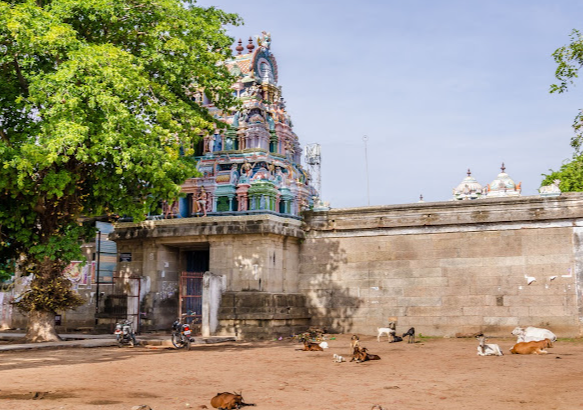Origin/History :-
- The temple is believed to have existed before the 7th century CE, as Thirunavukkarasar (Appar) has sung hymns in praise of Lord Shiva here.
- The original structure was later rebuilt as a stone temple during the Chola period.
- The Vijayanagara Nayakas and Nattukottai Nagarathars carried out further extensions and renovations.
- An inscription dated Saka 1439 (1517 CE) during the reign of Vijayanagara King Veera Krishnadeva Maharayar records the capture of Udayagiri Fort and the arrest of Thirumalairakuthar.
- The Maha Kumbabishekam was conducted on 10th September 2006 after renovations.
Puranic Significance :-
According to Hindu legend, Arjuna, the Pandava prince from the Mahabharata, performed intense penance at this place to seek the blessings of Lord Shiva. During his penance, a wild boar suddenly charged toward him. Arjuna swiftly shot the boar with an arrow, but at the same time, a hunter also claimed to have struck it first. This led to a dispute over who had killed the beast.
A battle of superiority erupted between Arjuna and the hunter. Arjuna attacked the hunter with an arrow, and the impact of the strike was felt across the world. In response, the hunter effortlessly tossed Arjuna away with his toe, causing him to fall into Krupa Samudram. It was only then that Arjuna realized the hunter was none other than Lord Shiva in disguise.
Goddess Parvati, who was present alongside Shiva, was initially angered by Arjuna’s attack on her husband. However, Shiva pacified her and, pleased with Arjuna’s devotion, granted him the divine weapon Pasupatham. Since Lord Shiva bestowed this powerful weapon upon Arjuna at this place, he became known as Pasupatheeswarar.
The Periyapuranam, a 11th-century compilation of Nayanmar hymns, records that Sambandar visited this temple after coming from the Thillai Nataraja Temple (Chidambaram).
